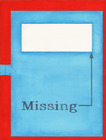Pre-release of Missing now available on iBooks.
A special rate of AU$ 14.99 for Missing is available during the iBooks pre-release period.
A BOOK REVIEW OF MISSING BY ANNABEL CRABB
When Charles Saatchi’s gallery opened in South Bank, with its notorious list of headliners (chunks of frozen human blood, sump oil lagoons and rooms full of chopped-up cattle), one small corner was devoted to a collection of newspaper cartoons lampooning the works.
My favourite was one in which an Eskimo, gazing at Damien Hirst’s pickled tiger shark, turned to a fellow visitor with the remark: “My five-year-old son could’ve done that.”
Interaction with art can be an occasion for hilariously multi-directional anxiety. The artist, observing someone observing her work, feels an unbearable cocktail of solicitude and vulnerability. The observer, knowing she is observed, frets that she’s missing something.
Is loud art – sledgehammer art - trying to abolish this moment of tender confusion? A message delivered by means of a decomposing rattlesnake chained to a chocolate wheel may still prove confounding to some viewers, but at least there’s something to talk about in the interim. No awkwardness need ensue, when the spectacle itself fills the silence.
Quiet art, like the work of Gail Hastings, chooses instead to inhabit that moment and furnish it with humour.
Am I missing something? – the timeless fretful self-interrogation of the enthusiastic but apprehensive gallery-creeper – becomes, in Missing, the shape of the artwork itself.
It’s funny, because everyone recognizes this tendency in the civilian art-lover; this scrupulous and obedient hunt for scraps of meaning hidden here and there by the artist, failure to spot any of which might constitute a serious inadequacy.
It’s courageous, because of all the compulsions that I imagine might grip an artist in the act of creation, the temptation to spell it out must surely be one of the hardest to resist.
And it’s generous, because the greatest expression of faith and trust an artist can possibly articulate in the unknown person who will – somewhere down the track – pause in front of her work is to invite them in to it. To allow them the run of the place. To give them the thrill of being in on the joke.
Gail Hastings’ work achieves quite a remarkable state of grace. Taut control in design and execution, coupled with an exhilarating and generous capacity to turn things over, at exactly the right time, to the viewer.








